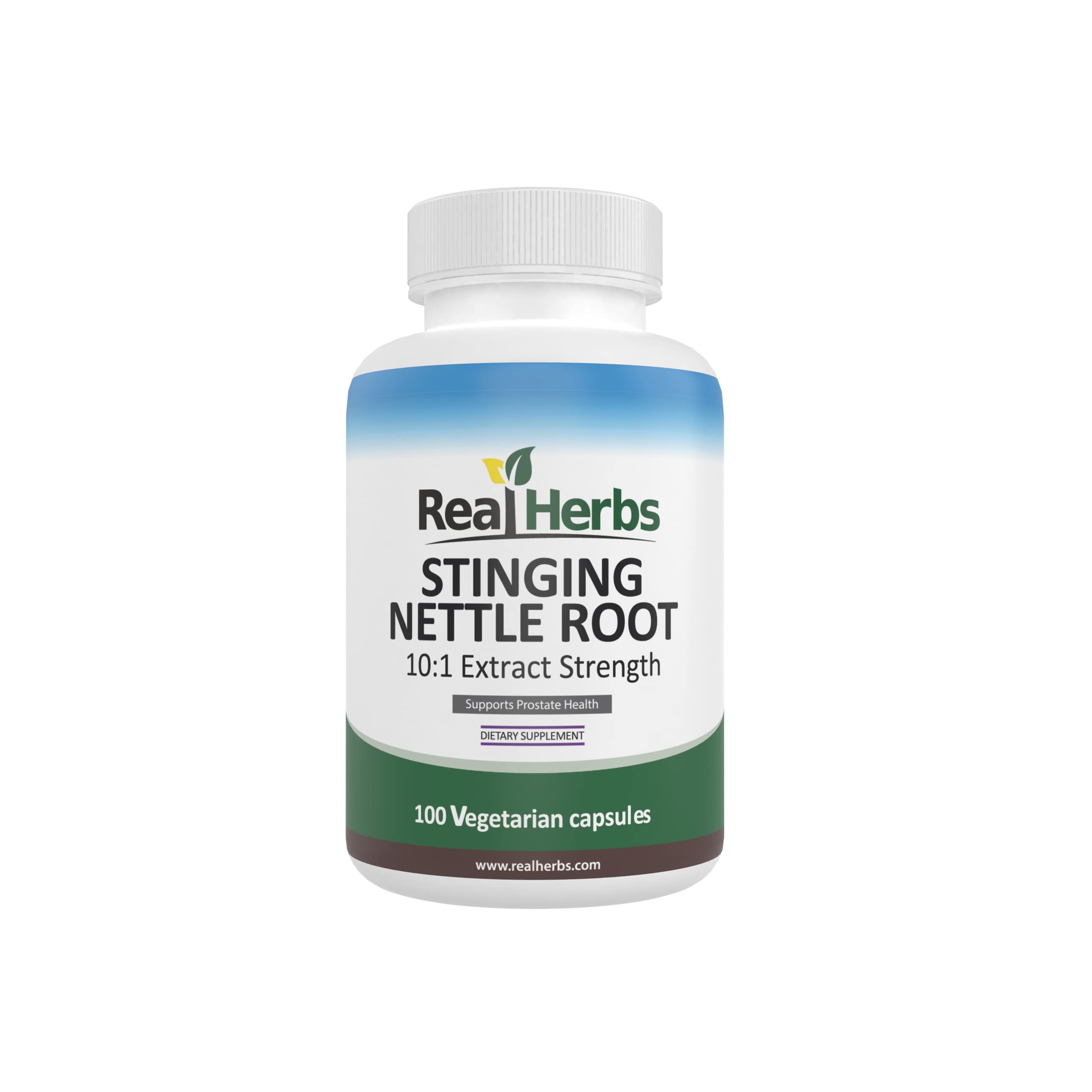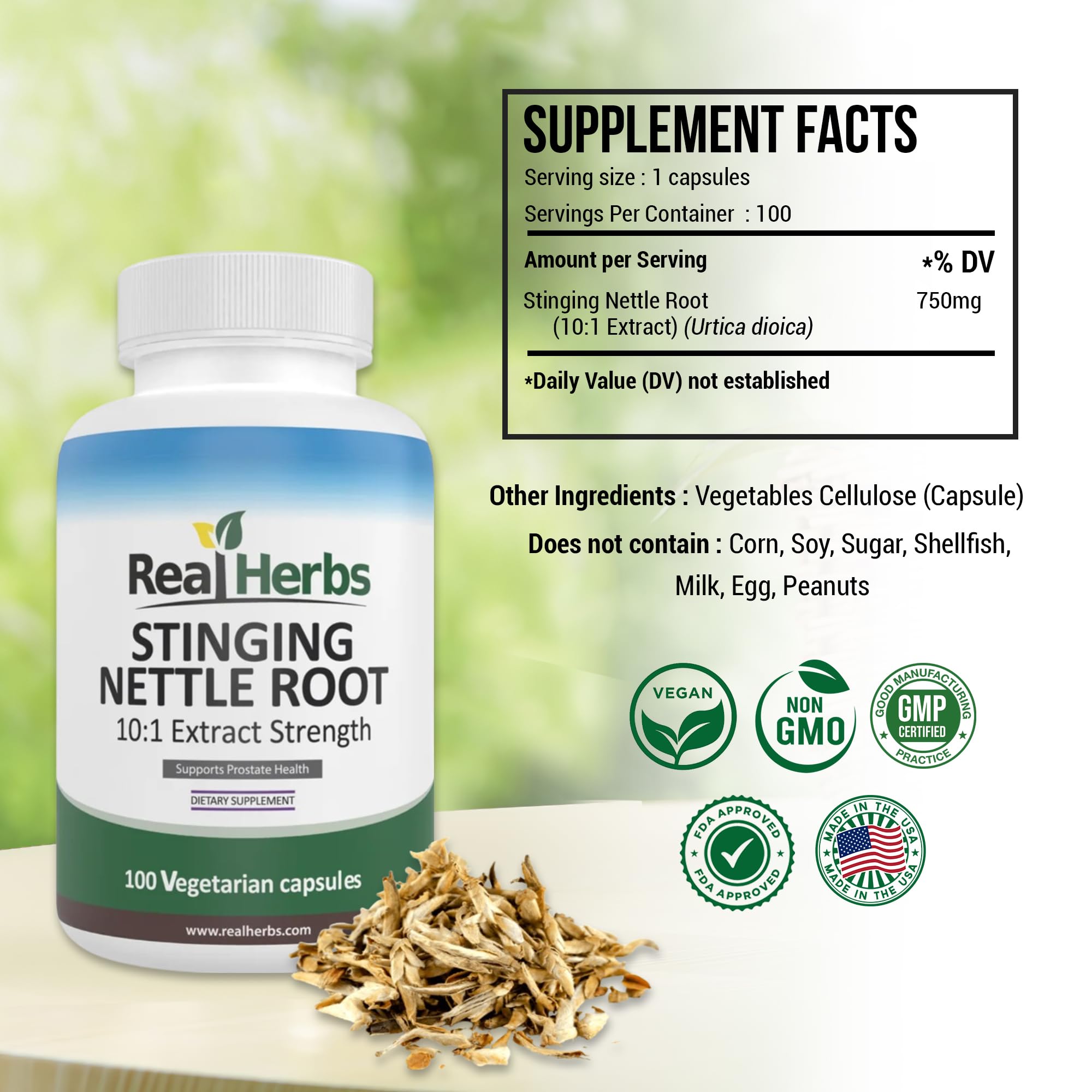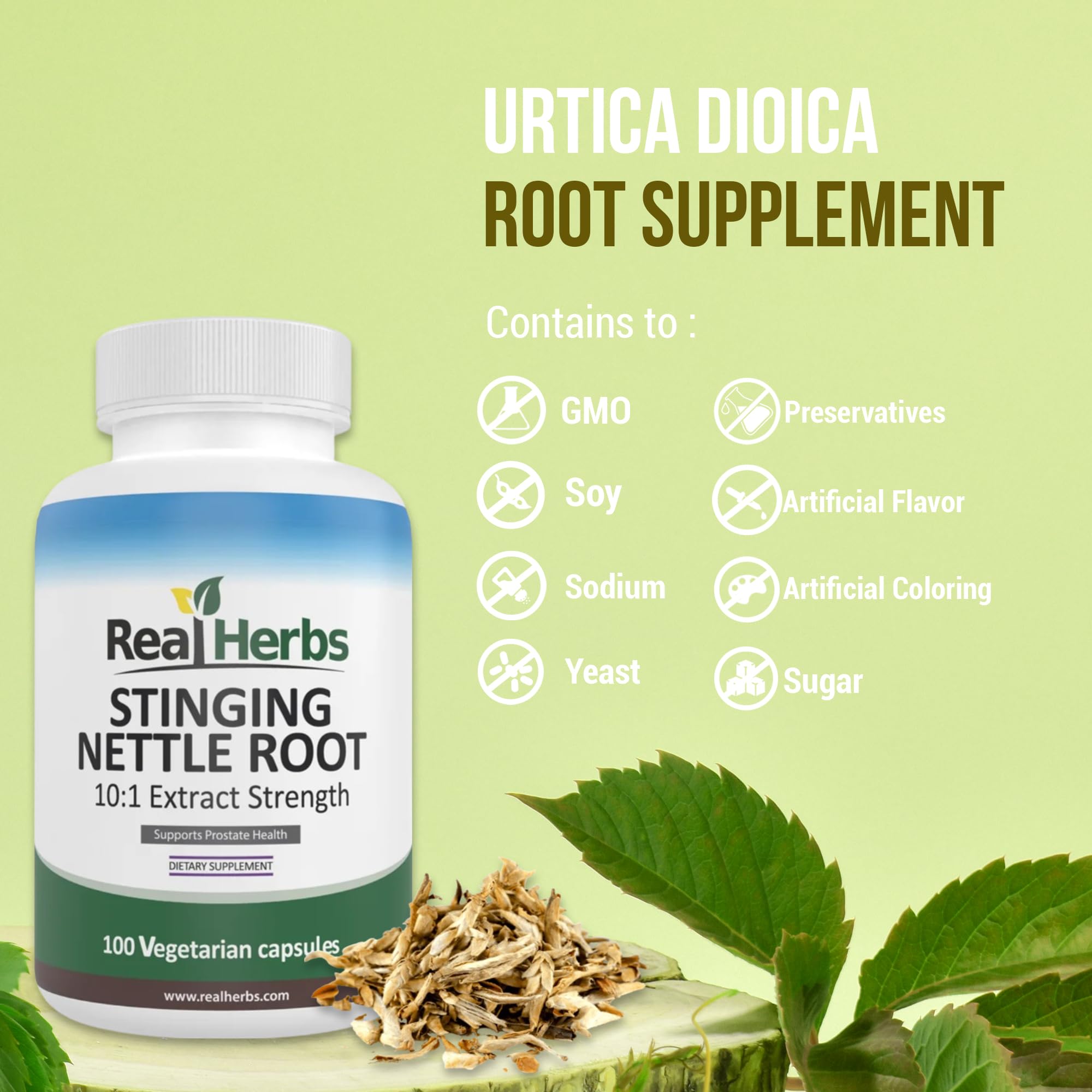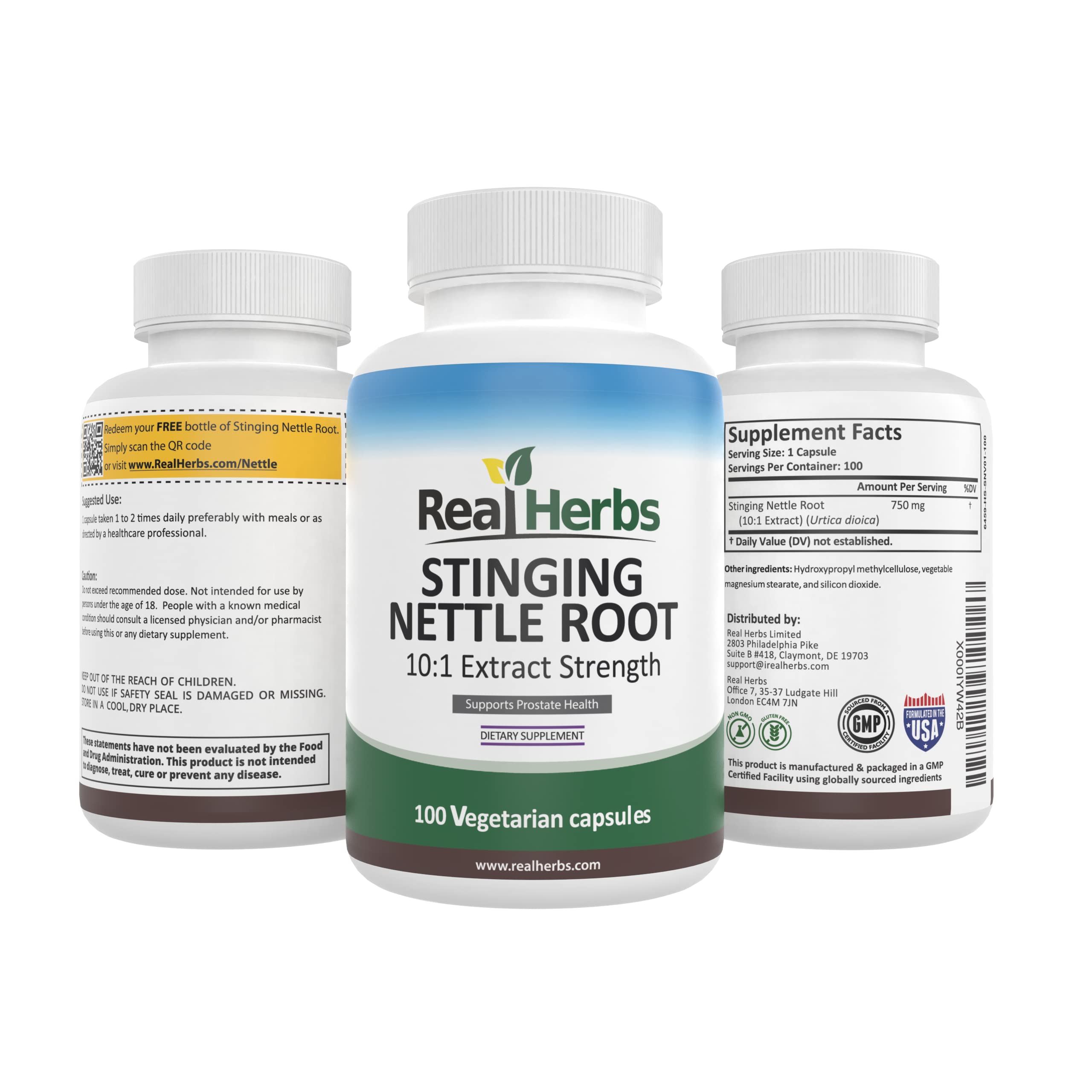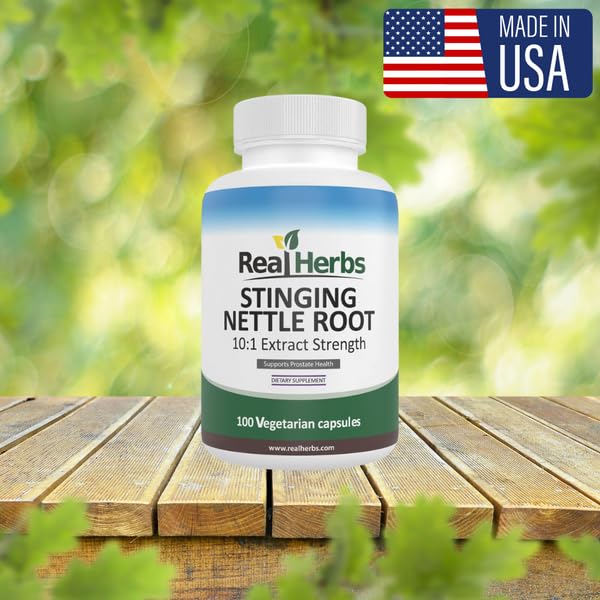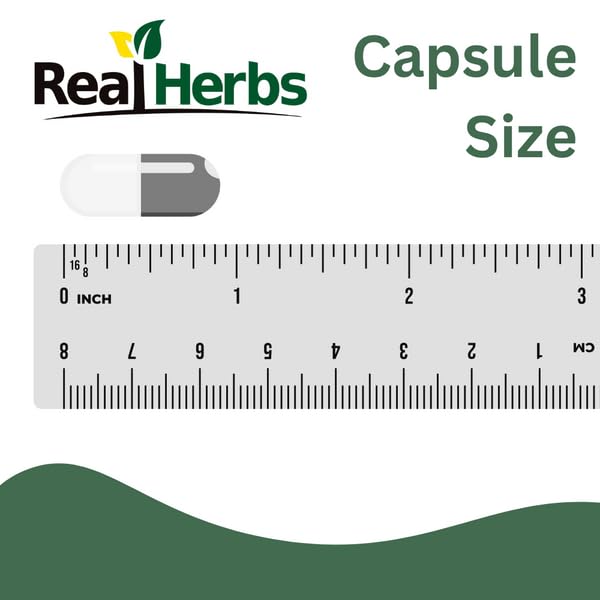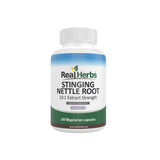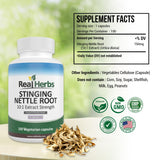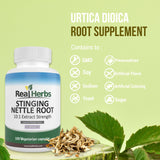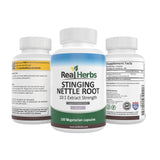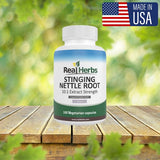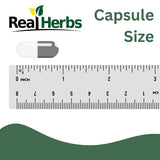Is Nettle Leaf Tea The Same As Stinging Nettle?
Is Nettle Leaf Tea The Same As Stinging Nettle?
Understanding the Herbal Distinction
An essential guide by Jessica Johnson, Herbal Science Researcher at Real Herbs.
Deciphering the Nettle Plant for Optimal Herbal Use
When exploring the world of herbal remedies, you might often come across terms like "stinging nettle" and "nettle leaf tea," sometimes used interchangeably. This can lead to confusion, as while they all refer to the same plant species, *Urtica dioica*, the distinction between the plant as a whole, its various parts—specifically the leaf and the root—and how they are prepared is crucial for understanding their unique chemical compositions, traditional uses, and specific health benefits.
This article aims to clarify the relationship between stinging nettle as a whole plant, nettle leaf, nettle root, and specifically how **nettle leaf tea** fits into this picture. We will delve into their individual chemical profiles, explore their traditional and scientifically supported uses, and highlight why choosing the right part of the plant matters for targeted wellness outcomes. By the end, you'll have a clear understanding of these powerful herbal remedies.

Understanding the Stinging Nettle Plant (*Urtica dioica*)
The term "stinging nettle" refers to the entire plant species, *Urtica dioica*, which is native to Europe, Asia, northern Africa, and North America. It's famously known for its fine, hollow hairs (trichomes) on the leaves and stems that release irritating chemicals upon contact, causing a temporary stinging sensation—hence the name "stinging nettle."
Despite its prickly defense mechanism, stinging nettle has been a staple in traditional medicine and cuisine for centuries. It's highly valued for its rich nutritional profile, including vitamins, minerals, amino acids, fatty acids, and various phenolic compounds [1, 2].
Nettle Leaf vs. Nettle Root: A Tale of Two Parts
While both are derived from the same plant, nettle leaf (aerial parts) and nettle root (underground parts) possess distinct chemical compositions that lend themselves to different therapeutic applications. Understanding this differentiation is key to leveraging the plant's full potential.
Nettle Leaf (Aerial Parts)
The leaves and upper stems of the stinging nettle plant are commonly referred to as "nettle leaf." These parts are rich in a diverse array of bioactive compounds, giving them potent properties used widely in herbal medicine [3]:
- Chemical Composition: Nettle leaves contain flavonoids, carotenoids, vitamins (A, C, K, and B vitamins), minerals (iron, calcium, magnesium), amino acids, and various phenolic compounds [1, 2, 3]. While fresh leaves contain compounds like histamine responsible for the sting, these are typically denatured during drying or processing for teas and supplements [1].
-
Traditional & Scientific Uses: Nettle leaf is primarily celebrated for its use in supporting seasonal allergies, joint health, and as a diuretic [1].
- Allergy Support: It may help modulate histamine response, making it a popular natural aid for hay fever symptoms [4, 8]. Clinical trials have shown efficacy in treating allergic rhinitis [9].
- Anti-inflammatory / Anti-rheumatic: Extracts from the leaf can inhibit proinflammatory transcription factors like NF-kappaB, contributing to its use as an anti-rheumatic remedy and for supporting joint pain [7]. It also shows promise in models of colitis [8].
- Nutritional Value: Highly nutritious, fresh nettle leaves are consumed as a food, similar to spinach. Nettle tea can be a good source of various beneficial compounds [1, 2].
- Other Research Areas: Nettle leaf extracts are also being investigated for broader health benefits, including effects on bone formation [6] and potential anti-cancer properties in vitro [4], as well as neuroprotective effects in models of Parkinson's disease [5].
Nettle Root (Underground Parts)
The root of the stinging nettle plant has a different phytochemical profile, making it suitable for distinct applications, primarily related to male health.
- Chemical Composition: Nettle root is particularly rich in lignans, scopoletin, and plant sterols (like beta-sitosterol) [3].
-
Traditional & Scientific Uses: Nettle root is most well-known for its use and scientific investigation in supporting prostate health and healthy testosterone levels in men.
- Prostate Health (BPH): It is a widely studied herbal remedy for symptoms of benign prostatic hyperplasia (BPH), helping to improve urinary flow and reduce nighttime urination [1, 3].
- Testosterone Support: The lignans in nettle root may interact with sex hormone-binding globulin (SHBG), potentially reducing the amount of testosterone bound to SHBG and thereby increasing levels of "free" (bioavailable) testosterone [1].
What is Nettle Leaf Tea?
Nettle leaf tea, or nettle infusion, is a common and popular way to consume the benefits of stinging nettle leaves. It is made by steeping dried (or sometimes fresh, blanched) nettle leaves in hot water.
- Preparation: The process is simple: dried nettle leaves are added to hot water and allowed to steep. The heat effectively neutralizes the stinging hairs present on fresh leaves, making the tea safe and pleasant to drink.
- Benefits through Tea: Nettle leaf tea is a hydrating beverage that delivers the water-soluble vitamins, minerals, and phenolic compounds found in the leaves. It's enjoyed for its earthy flavor and for general wellness support, including its diuretic and anti-inflammatory effects. Studies on nettle tea have even investigated its impact on cell growth in vitro [4], and how brewing time and temperature can influence nutrient content like Vitamin C [6].
Why the Distinction Matters: Targeted Health Benefits
While both nettle leaf and nettle root come from the same plant, their distinct chemical profiles mean they are best used for different health concerns. Using nettle leaf tea (or leaf extracts) for prostate issues, or nettle root supplements for seasonal allergies, might not yield the desired results. Therefore, understanding which part of the plant is specified in a supplement or preparation is critical for targeted and effective herbal supplementation.
Safety and Side Effects
Both nettle leaf (including tea) and nettle root are generally considered safe for most people when consumed in recommended dosages. However, awareness of potential side effects and interactions is important [1].
- Common Mild Side Effects: Mild gastrointestinal upset (stomach upset, diarrhea, or constipation) can occur [1]. Both parts of the plant also have a mild diuretic effect (increased urination) [1].
-
Important Precautions:
- **Allergies:** Rare allergic reactions are possible with any plant product.
- **Drug Interactions:** Nettle can interact with medications like blood thinners (due to Vitamin K), blood pressure medications, and diabetes drugs, potentially altering their effects [1, 4]. Always consult your healthcare provider if you are on medication.
- **Pregnancy and Breastfeeding:** Nettle is generally not recommended during pregnancy or breastfeeding due to insufficient safety data and potential effects on uterine contractions [1].
Conclusion: Making Informed Choices for Herbal Health
In conclusion, while "stinging nettle" refers to the entire plant (*Urtica dioica*), **nettle leaf tea** is made specifically from the dried leaves. It is a distinct preparation from nettle root supplements, and each offers unique benefits. Nettle leaf tea is a nourishing beverage valued for its diuretic properties, anti-inflammatory effects (useful for allergies and joint pain), and rich nutritional profile.
Nettle root, conversely, is specifically used for prostate health and testosterone support. Understanding these differences empowers you to make informed decisions when selecting herbal remedies. By choosing the correct part of the stinging nettle plant and its appropriate preparation for your specific health needs, you can effectively harness its potent benefits and embark on a more targeted path to wellness. Always remember to consult with a healthcare professional before starting any new supplement.
Ready to experience the benefits of Stinging Nettle Root?
Real Herbs Stinging Nettle Root Extract is a premium, potent supplement designed to support healthy testosterone levels, prostate health, and overall male vitality. Crafted for purity and efficacy, it helps liberate your free testosterone, so you can enjoy enhanced energy, improved performance, and a renewed sense of well-being.
Who it helps: Men experiencing symptoms of low testosterone, seeking natural prostate support, or looking to optimize their overall male health naturally.
Why it’s safe/trusted: Manufactured under strict quality controls, Real Herbs prioritizes purity and potency, ensuring you receive a product you can trust.
All our products are backed by our 100-Day Money-Back Guarantee!
"I've been using Real Herbs Stinging Nettle for a few months now, and I've noticed a significant improvement in my energy levels and overall vitality. Highly recommend it!" - Mark T.
"As someone approaching 50, I was looking for natural ways to support my health. This product has genuinely made a difference in my energy and mood." - David S.
Disclaimer: The information provided in this article is for educational purposes only and is not intended as medical advice. Always consult with a qualified healthcare professional before making any decisions about your health or starting any new supplement regimen. These statements have not been evaluated by the Food and Drug Administration. This product is not intended to diagnose, treat, cure, or prevent any disease.
Scientific Credibility & Citations
- Bhusal KK, Magar SK, Thapa R, et al. Nutritional and pharmacological importance of stinging nettle (*Urtica dioica* L.). *Heliyon*. 2022 Jun 22;8(6):e09717. PMID: 35800714 (Review)
- Devkota HP, Paudel KR, Khanal S, Baral A, Panth N, Adhikari-Devkota A, Paudel S, Dahal B, Yadav SK, Aryal S, Khan H, Singh SK. Stinging Nettle (*Urtica dioica* L.): Nutritional Composition, Bioactive Compounds, and Food Functional Properties. *Molecules*. 2022 Aug 23;27(17):5429. PMID: 36014458 (Review)
- Tarasevičienė Ž, Vitkauskaitė M, Paulauskienė A, Černiauskienė J. Wild Stinging Nettle (*Urtica dioica* L.) Leaves and Roots Chemical Composition and Phenols Extraction. *Plants (Basel)*. 2023 Jan 9;12(2):309. PMID: 36679022 (Research Article)
- Hodroj MH, et al. Nettle Tea Inhibits Growth of Acute Myeloid Leukemia Cells In Vitro by Promoting Apoptosis. *J Med Food*. 2020 Sep;23(9):976-981. PMID: 32872275 (In-vitro study)
- Alshammari M, et al. The role of stinging nettle (*Urtica dioica* L.) in the management of Parkinson's disease: A systematic review. *J Ethnopharmacol*. 2024 Feb 20;322:117604. PMID: 38387425 (Review)
- Nourani M R, et al. Does stinging nettle (*Urtica dioica*) have an effect on bone formation in diabetic rats? *Avicenna J Phytomed*. 2016 May-Jun;6(3):362-71. PMID: 27209059 (Animal study)
- Riehemann K, Kölle EU. Plant extracts from stinging nettle (*Urtica dioica*), an antirheumatic remedy, inhibit the proinflammatory transcription factor NF-kappaB. *FEBS Lett*. 1999 Jan 22;442(1):89-94. PMID: 9923611 (In-vitro study)
- Haghir Ebrahimi K, et al. Ameliorative effect of IDS 30, a stinging nettle leaf extract, on chronic murine colitis. *J Ethnopharmacol*. 2004 Oct;95(1):15-20. PMID: 15338166 (Animal study)
- Roschek Jr B, Fink RC, McMichael M, Alberte RS. Nettle extract (*Urtica dioica*) affects key receptors and enzymes associated with allergic rhinitis. *Phytother Res*. 2009 Jul;23(7):920-6. PMID: 19140159 (In-vitro study)
- Esmaeili A, Azizi-Soleiman F. Efficacy of supportive therapy of allergic rhinitis by stinging nettle. *J Complement Integr Med*. 2018 Jun 20;15(3):/j/jcim.2018.15.issue-3/jcim-2017-0099/jcim-2017-0099.xml. PMC5963652 (Human Clinical Trial)
- Wolska J, Czop M, Jakubczyk K, Janda K. Influence of temperature and brewing time of nettle (*Urtica dioica* L.) infusions on vitamin C content. *Pomeranian Med Univ*. 2016;61(1):60-5. PMID: 27925706 (Research Article on infusions, includes root)

